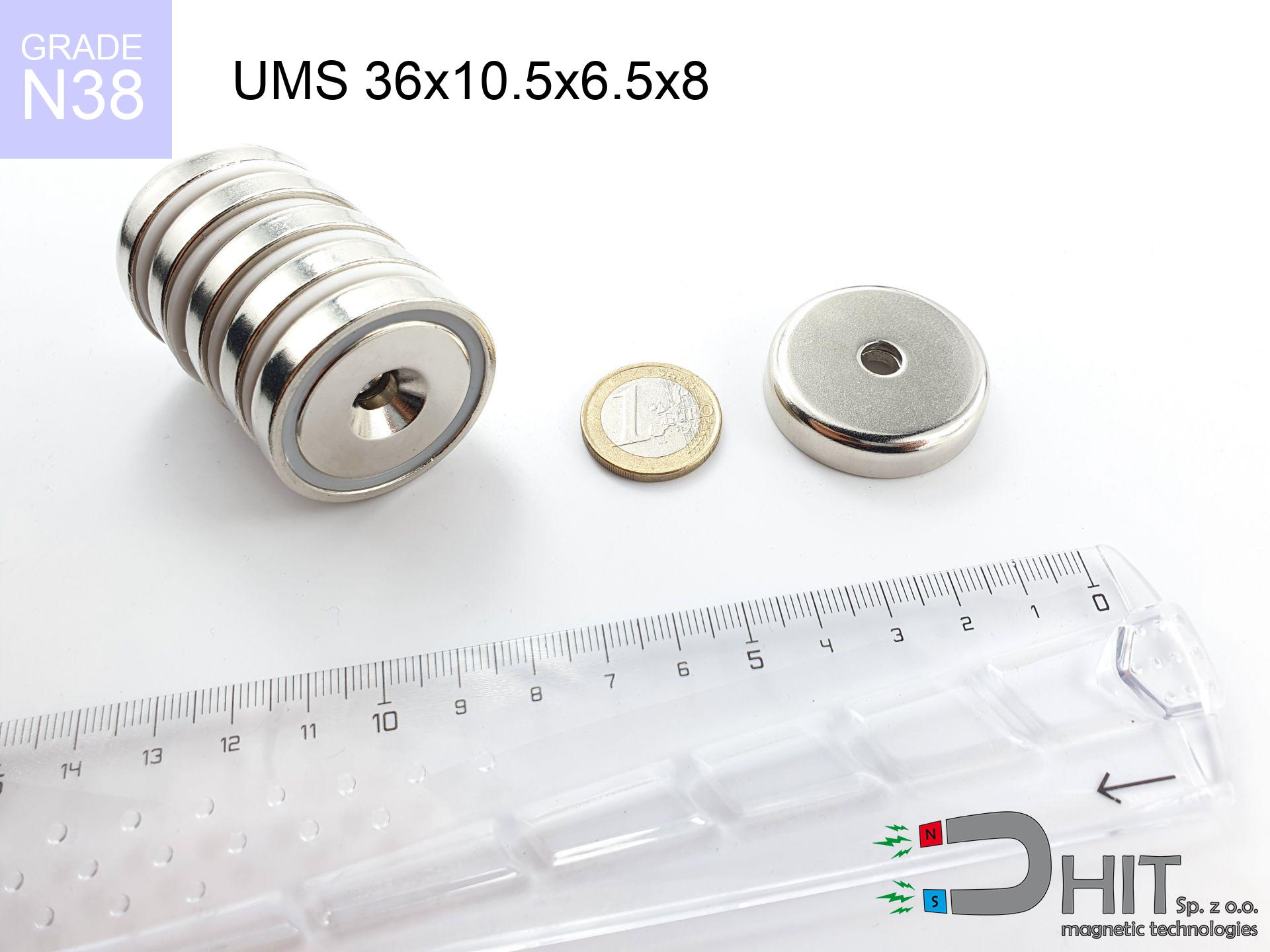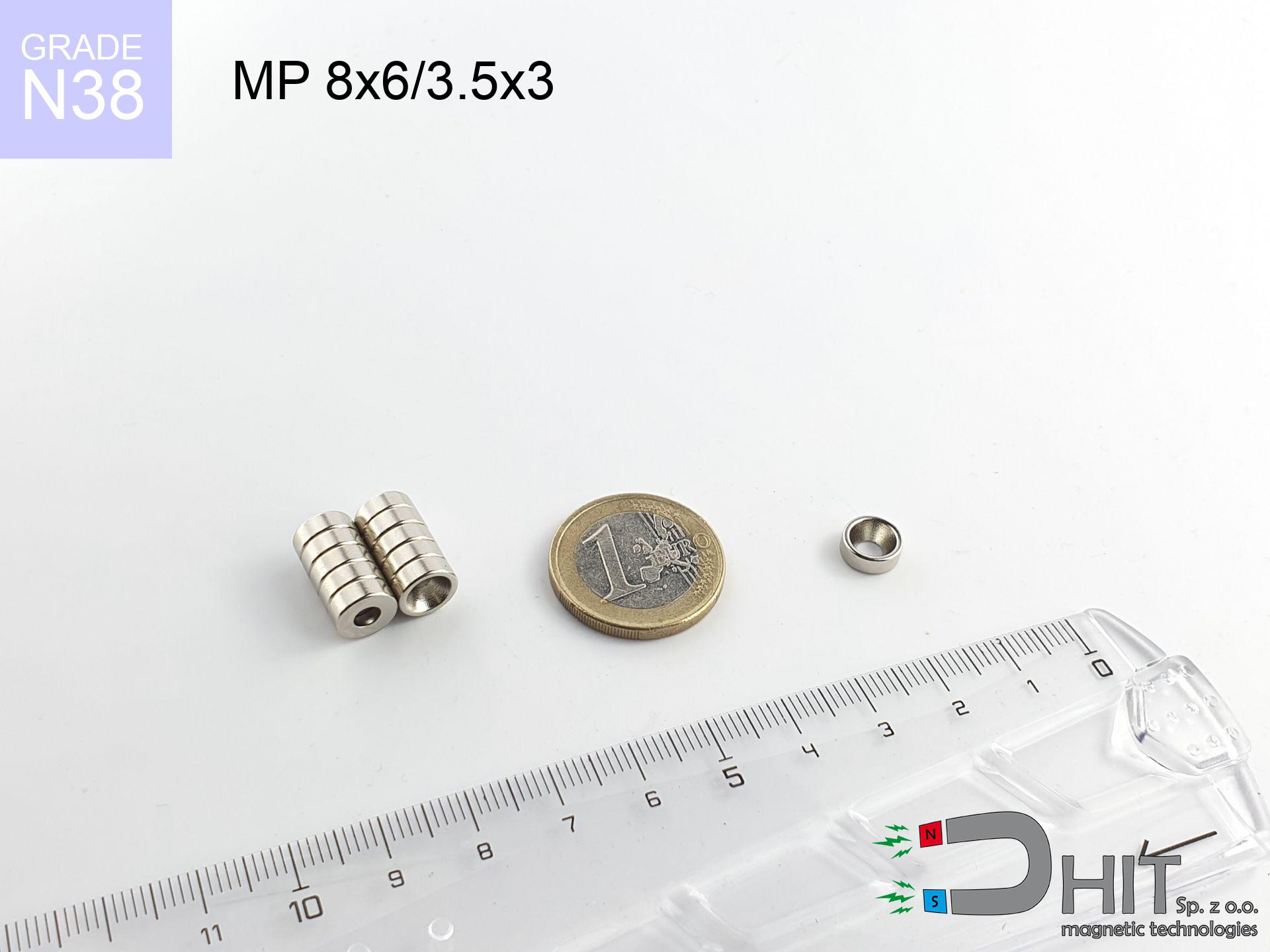UMGGW 22x6 [M4] GW / N38
magnetic holder rubber internal thread
catalog number 160304
GTIN: 5906301813620
diameter Ø
22
mm [±0,1 mm]
height
6
mm [±0,1 mm]
capacity ~
5.10 kg / 50.01 N
max. temperature
≤ 80
°C
catalog number 160304
GTIN: 5906301813620
diameter Ø
22 mm [±0,1 mm]
height
6 mm [±0,1 mm]
capacity ~
5.10 kg / 50.01 N
max. temperature
≤ 80 °C
7.38 ZŁ gross price (including VAT) / pcs +
6.00 ZŁ net price + 23% VAT / pcs
bulk discounts:
need more quantity?Do you have difficulties in choosing?
Give us a call tel: +48 888 99 98 98 or contact us through contact form on the contact page. You can check the power as well as the shape of neodymium magnet in our force calculator power calculator
Orders placed by 2:00 PM will be shipped on the same business day.
Specification: magnetic holder rubber internal thread 22x6 [M4] GW / N38
Magnetic properties of the material N38
Physical properties of sintered neodymium magnets Nd2Fe14B
Product suggestions
Advantages and disadvantages of neodymium magnets NdFeB.
In addition to immense power, neodymium magnets have the following advantages:
- They do not lose strength over time - after approximately 10 years, their strength decreases by only ~1% (theoretically),
- They are highly resistant to demagnetization by external magnetic sources,
- By applying a shiny coating of nickel, gold, or silver, the element gains an aesthetic appearance,
- They exhibit extremely high magnetic induction on the surface of the magnet,
- By using an appropriate combination of materials, they can achieve high thermal resistance, allowing them to operate at temperatures up to 230°C and above...
- Thanks to the flexibility in shaping or the ability to adapt to specific requirements – neodymium magnets can be produced in many variants of shapes and sizes, which amplifies their universality in usage.
- Key role in modern technologies – are utilized in computer drives, electric motors, medical devices and various technologically advanced devices.
Disadvantages of neodymium magnets:
- They can break as they are extremely fragile when subjected to a powerful impact. If the magnets are exposed to impacts, it is suggested using magnets in a metal holder. The steel housing in the form of a holder protects the magnet from impacts and also increases its overall strength,
- Magnets lose their strength due to exposure to high temperatures. In most cases, when the temperature exceeds 80°C, these magnets experience permanent reduction in strength (although it is worth noting that this is dependent on the shape and size of the magnet). To avoid this problem, we offer special magnets marked with the [AH] symbol, which exhibit high temperature resistance. They can operate even at temperatures as high as 230°C or more,
- They rust in a humid environment. For outdoor use, we recommend using waterproof magnets, such as those made of rubber or plastic,
- The use of a cover or a magnetic holder is recommended due to the limited possibilities of manufacturing threads or complex shapes in the magnet
- Health risk arising from small pieces of magnets are risky, if swallowed, which is crucial in the context of children's health. Furthermore, small elements of these products can hinder the diagnostic process after entering the body.
Handle Neodymium Magnets Carefully
The magnet is coated with nickel - be careful if you have an allergy.
Studies show a small percentage of people have allergies to certain metals, including nickel. An allergic reaction often manifests as skin redness and rash. If you have a nickel allergy, you can try wearing gloves or simply avoid direct contact with nickel-plated neodymium magnets.
Do not place neodymium magnets near a computer HDD, TV, and wallet.
Magnetic fields generated by neodymium magnets can damage magnetic storage media such as floppy disks, credit cards, magnetic ID cards, cassette tapes, video tapes, or other similar devices. In addition, they can damage televisions, VCRs, computer monitors, and CRT displays. Avoid placing neodymium magnets in close proximity to electronic devices.
Magnets made of neodymium are incredibly delicate, they easily crack and can crumble.
Neodymium magnets are highly delicate, and by joining them in an uncontrolled manner, they will crumble. Magnets made of neodymium are made of metal and coated with a shiny nickel, but they are not as durable as steel. At the moment of collision between the magnets, sharp metal fragments can be dispersed in different directions.
It is important to keep neodymium magnets out of reach from children.
Not all neodymium magnets are toys, so do not let children play with them. In such a situation, surgery is necessary to remove them. In the worst case scenario, it can result in death.
Neodymium magnets are primarily characterized by their significant internal force. They attract to each other, and any object that comes in their way will be affected.
Magnets may crack or crumble with careless joining to each other. You can't move them to each other. At a distance less than 10 cm you should have them very strongly.
Dust and powder from neodymium magnets are flammable.
Avoid drilling or mechanical processing of neodymium magnets. Once crushed into fine powder or dust, this material becomes highly flammable.
Under no circumstances should neodymium magnets be brought close to GPS and smartphones.
Magnetic fields interfere with compasses and magnetometers used in navigation for air and sea transport, as well as internal compasses of smartphones and GPS devices.
Comparing neodymium magnets to ferrite magnets (found in speakers), they are 10 times more powerful, and their power can shock you.
Read the information on our website on how to properly utilize neodymium magnets and avoid significant harm to your body and unintentional damage to the magnets.
Keep neodymium magnets away from people with pacemakers.
Neodymium magnets produce strong magnetic fields that can interfere with the operation of a heart pacemaker. However, if the magnetic field does not affect the device, it can damage its components or deactivate the device when it is in a magnetic field.
Neodymium magnets can demagnetize at high temperatures.
Despite the fact that magnets have been observed to maintain their efficacy up to temperatures of 80°C or 175°F, it's essential to consider that this threshold may fluctuate depending on the magnet's type, configuration, and intended usage.
Please see the article - What danger lies in neodymium magnets? You will learn how to handle them properly.

![UMGGW 22x6 [M4] GW / N38 UMGGW 22x6 [M4] GW / N38](https://cdn3.dhit.pl/graphics/products/umg-22x6-m4-gw-jek.jpg)


![magnetic separator 25x400 [2xM8] / N42 magnetic separator 25x400 [2xM8] / N42](https://cdn3.dhit.pl/graphics/products/sm-25x400-2xm8-daj.jpg)


